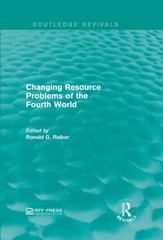Question
True-False Questions (10 best counts, 1 points each = 10 points total) T F 1. Marginal product is increasing as the firm uses more and
True-False Questions (10 best counts, 1 points each = 10 points total)
T F 1. Marginal product is increasing as the firm uses more and more of a factor of production.
T F 2. Poor choices arising from decision biases prove that rational, analytic thinking is always superior to intuition.
T F 3. Well-behaved isoquants are convex and downward sloping.
T F 4. Narrow bracketing leads to a better choice than broad bracketing since there are less alternatives to consider.
T F 5. Too many options in a choice situation can lead to no choice at all.
T F 6. On a perfectly competitive market, Pareto efficiency will be accomplished.
T F 7. The law of small numbers means that people are more likely to be mistaken if they cannot repeat the same decision many times.
T F 8. According to behavioral economics, people have unlimited mental resources to make rational choices, but they still have decision biases because of ignorance.
T F 9. The fact that many smokers are not fully willing to accept the risks of smoking might be also explained by choice-supportive bias.
T F 10. Monotonic transformation of a utility function still represents the same set of preferences.
T F 11. Economies of scale mainly arise because of spreading fixed costs across more units produced.
T F 12. Elasticity does not change along a linear demand curve.
Step by Step Solution
There are 3 Steps involved in it
Step: 1

Get Instant Access to Expert-Tailored Solutions
See step-by-step solutions with expert insights and AI powered tools for academic success
Step: 2

Step: 3

Ace Your Homework with AI
Get the answers you need in no time with our AI-driven, step-by-step assistance
Get Started


